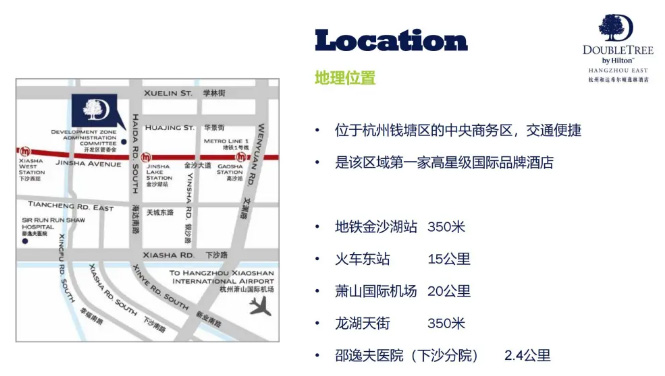 |
To deepen the multidisciplinary cross-fertilization in the field of materials science, The Innovation Conference on Materials 2025 will be held on May 23-25, 2025 in Hangzhou, Zhejiang Province, China. This conference brings together domestic and foreign scientists in the field of materials, focusing on a number of cutting-edge directions, such as Mechanisms of heat transfer and exploration of materials with extremely high or low thermal conductivity, biomass-based functional materials, semiconductor devices, circuits, materials and physics, high-performance functional carbon materials, perovskite luminescent materials and displays, and AI-driven materials research and development. The conference focuses on breakthroughs in technological bottlenecks, paths of cross-disciplinary integration, and industrialization practices, and other key issues to carry out in-depth discussions. The organizing committee sincerely invites domestic and foreign experts and scholars, industry leaders, journal editors and young talents to participate in the conference, and jointly build a full chain of innovation ecology of "basic research - technology development - industrial application". In May 2025, let's meet in Hangzhou! Conference Sessions Session 1: Mechanisms of heat transfer and exploration of materials with extremely high or low thermal conductivity Conveners: Gang Wang, Jie Ma, Chenguang Fu Session Overview: Extreme thermal conductivity materials research focuses on phonon excitation, scattering and annihilation as well as electron and polariton heat transfer processes, and is dedicated to revealing the heat transfer mechanism under multi-field coupling. Through the strategies of structural design, defect engineering and stress regulation, combined with multi-scale characterization technology, we will explore the design principles and preparation methods of extreme thermal conductivity materials, promote the improvement of the theory of heat transport, and provide innovative solutions for the research and development of thermally functional materials, thermal protection in extreme environments, and intelligent thermal management. Session 2: Biomass-Based Functional Materials Conveners: Chaoji Chen Session Overview: Driven by global carbon neutrality and green manufacturing initiatives, biomass-based functional materials have emerged as a frontier in materials science. Innovations span cellulose nanocrystals for smart sensing, lignin-derived carbon composites for structural applications, chitin-based biomimetic medical dressings, and starch-derived fully degradable packaging systems. These materials redefine sustainable solutions for energy storage, environmental remediation, intelligent healthcare, and eco-friendly packaging, and energy-efficient buildings through precise structural design and functional optimization. Session 3: Semiconductor Devices, Circuits, Materials and Physics Conveners: Mingzhi Dai, Hui Zhou, Da Zhan, Yufeng Zhang Session Overview: Integrated circuits with semiconductor devices, circuits, materials and physics are the backbone of the modern intelligence era. For instance, when the arithmetic growth of traditional chips encountered the physical bottleneck, scientists will focus on improving the new structure of semiconductor devices- with the effects such as capacitance of the charging-discharging, materials, atomic level of the wonderful properties, the ion transport characteristics, two-dimensional material effect to mimic neuron or artificial synaptic behaviors, so that the bionic system can be expected to maintain the basic functions with trillions of times the operation; through the semiconductor device new structure, new materials to realize the storage and calculation of the one, multi-terminal device new structure to make the human brain chip energy consumption to every pulse event. The energy consumption of brain chips is reduced to every pulse event of the human brain, and every step of device structure, circuit, material, and physics is expected to continue to help breaking through the limits of computation. Session 4: High Performance Functional Carbon Materials Conveners: Bin Zhang Session Overview: Carbon-based advanced materials (including carbon fibers, graphite, graphene and their derivative systems) are driving paradigm shifts in new energy and advanced materials through their multi-source precursors (biomass/polymers/coal-based resources), precisely controllable structures (gradient pyrolysis/directional assembly), and programmable functionalities. The multidisciplinary-integrated material digital twin platform has overcome atomic-to-mesoscopic cross-scale correlation challenges, enabling precise regulation of electronic band engineering and surface coordination chemistry to develop high-performance carbon materials with adaptive characteristics. Technological breakthroughs manifest in three key dimensions: multi-ion collaborative transport networks in high-energy-density solid-state batteries, defect-engineered catalytic interfaces for green hydrogen storage/transport systems, and topologically optimized stability designs for aerospace thermal protection materials/nuclear core materials/semiconductor thermal field materials, establishing an innovation chain spanning energy storage to extreme environment applications. The closed-loop R&D paradigm of "design-synthesis-validation" guided by computational materials science not only accelerates low-carbon transformation of traditional energy systems but also pioneers novel solutions for strategic fields like deep-space exploration equipment. We hereby initiate a global collaborative innovation initiative, focusing on overcoming critical challenges in material genome engineering, in-situ dynamic characterization, and continuous intelligent manufacturing, to jointly construct a carbon material-driven zero-carbon industrial ecosystem. Session 5: Perovskite Luminescent Materials and Displays Conveners: Shuli Wang, Xingliang Dai, Jiajun Luo, Wenxu Yin, Ziwei Li Session Overview: In the era of continuous innovation in display technology, perovskite luminescent materials have become the research focus in the display field due to their excellent optoelectronic properties. Perovskite luminescent materials possess characteristics such as high fluorescence quantum yield, narrow emission peaks, and solution-processability, and show great application potential in high-resolution displays, high-color-gamut displays, and other aspects. This special topic focuses on the luminescence processes of perovskite luminescent materials, such as excitation and radiative recombination, and conducts in-depth research on their luminescence mechanisms under electric and optical fields. Through strategies like composition control, surface passivation, and heterostructure design, combined with advanced characterization techniques, it explores the design principles and preparation methods for high-performance perovskite luminescent materials. Meanwhile, it is committed to solving problems such as poor stability and efficiency roll-off of perovskite materials, and promoting the performance improvement of perovskite light-emitting diode displays and perovskite Micro-LED displays. The research of this special topic will provide innovative solutions for the development of next-generation high-performance display technologies and the achievement in technological breakthroughs and industrial upgrades in the display field. Session 6: AI-Driven Materials Research and Development Conveners: Xiaodong Xiang, Kui Jin, Jing Guo Session Overview: The arrival of the age of artificial intelligence means a reconfiguration of human methodology for understanding and transforming the world, and with it, scientific research has entered a data-intensive fourth paradigm. Its core feature is the analysis of data based on machine learning algorithms to establish complex correlations between multidimensional parameters and key characteristics. Materials science is one of the most complex scientific systems. Benefiting from the rapid development of advanced algorithms, materials preparation/characterization technologies, and big data methods, AI has been playing an increasingly important role in materials research and development. Organizing Institutions and Supporting Organizations Host: The Innovation Conference Venue Hangzhou China
Accommodation Information DoubleTree by Hilton Hangzhou East Hotel Address: No. 600 Jinsha Avenue, Economic and Technological Development Zone. Qiantang District, Hangzhou, China Transportation Guide DoubleTree by Hilton Hangzhou East is strategically located in the Jinsha Lake core area of Qiantang District, adjacent to Jinsha Lake Station (Line 1) providing direct Metro access to historical landmarks, cultural attractions, and commercial hubs. *East: A 5-minute walk to Longhu Paradise Walk shopping complex, 15-minute walk to Jinsha IMPRESSION City Mall. *West: Direct connectivity via Desheng Elevated Expressway or Metro Line 1 to Hangzhou East Railway Station, Xiaoshan International Airport, West Lake, and Xixi Wetland. *South: Proximity to Olympic Sports Center, Qiantang River New Town, and Qiantang River Tide-Watching Site. *North: Access to Tangqi Ancient Town and Xiasha Outlets via the expressway.
|


